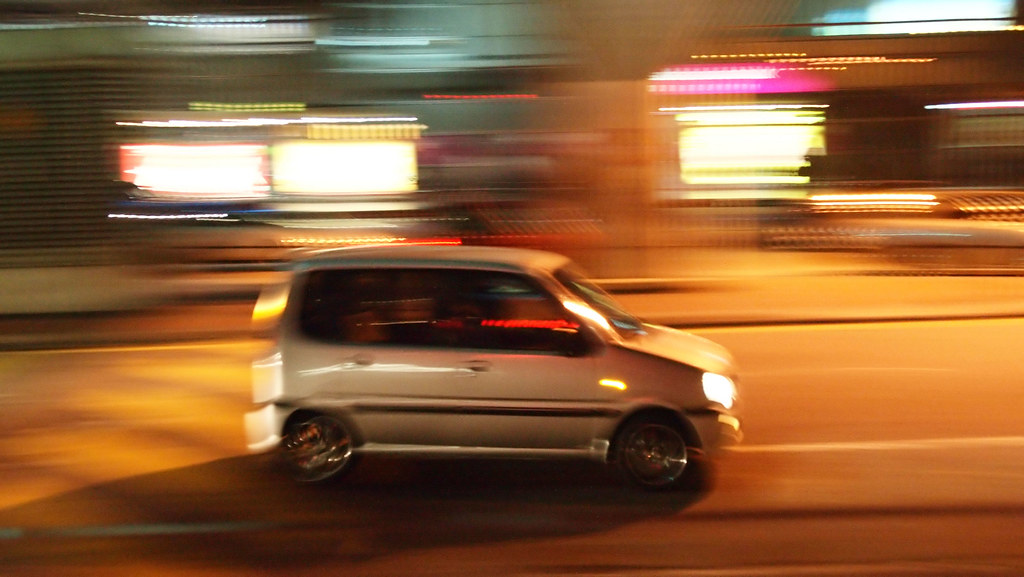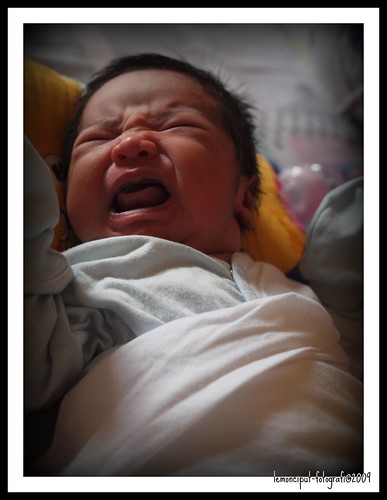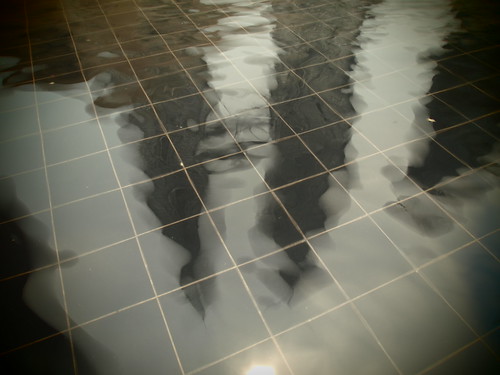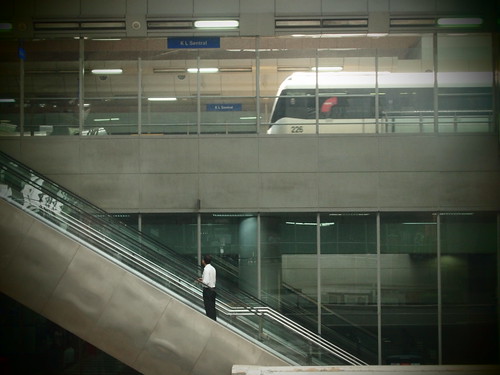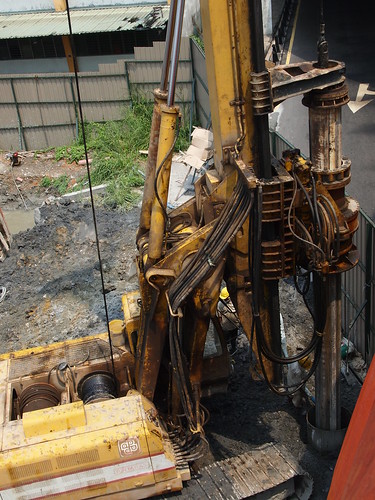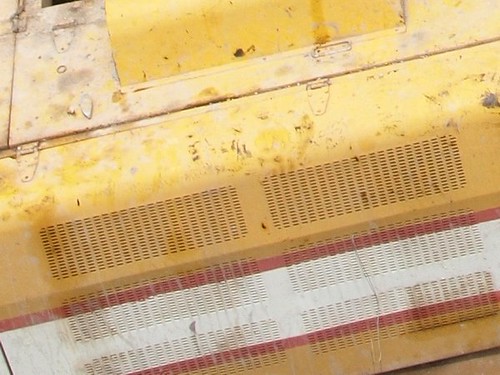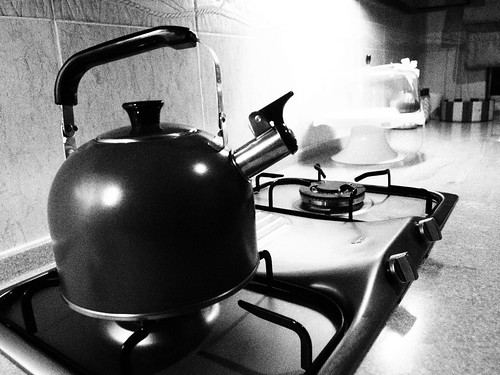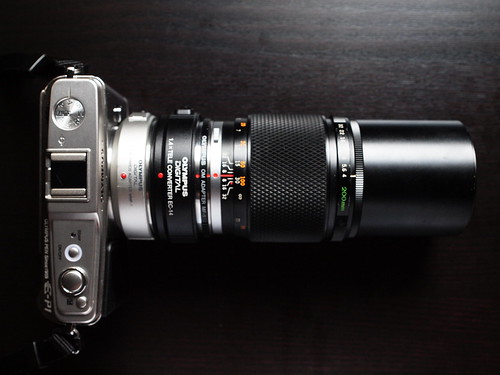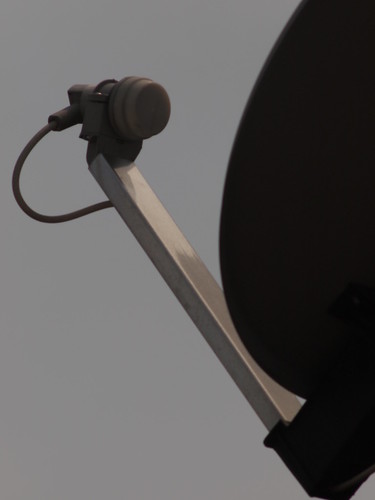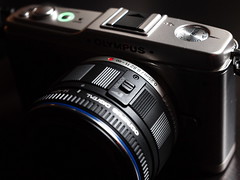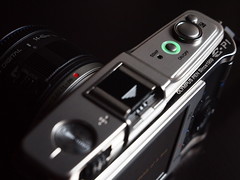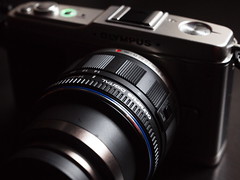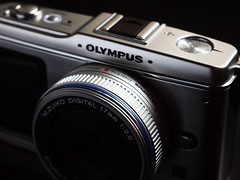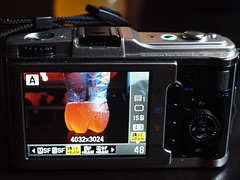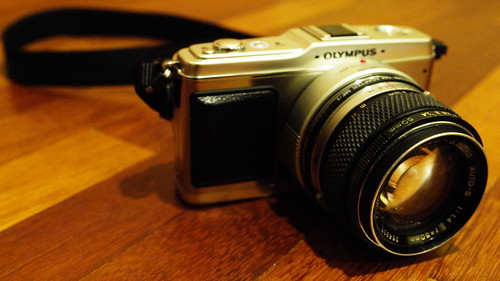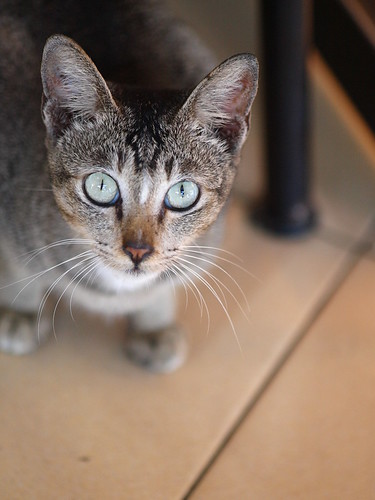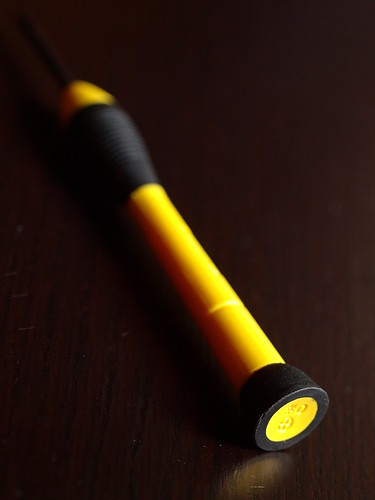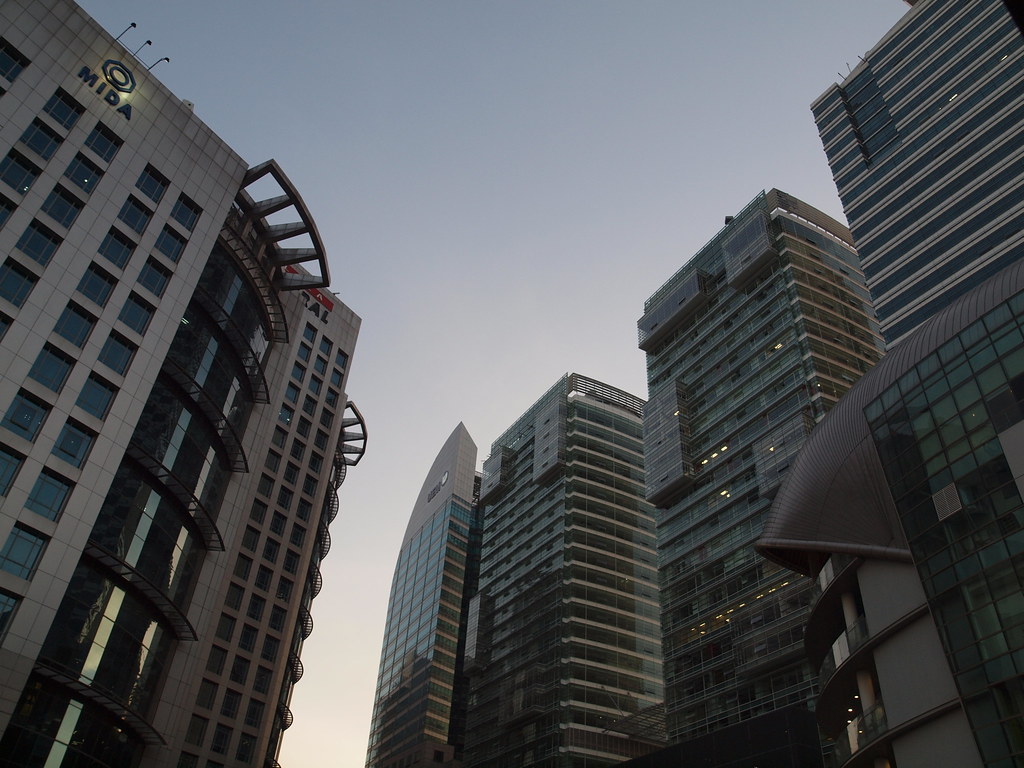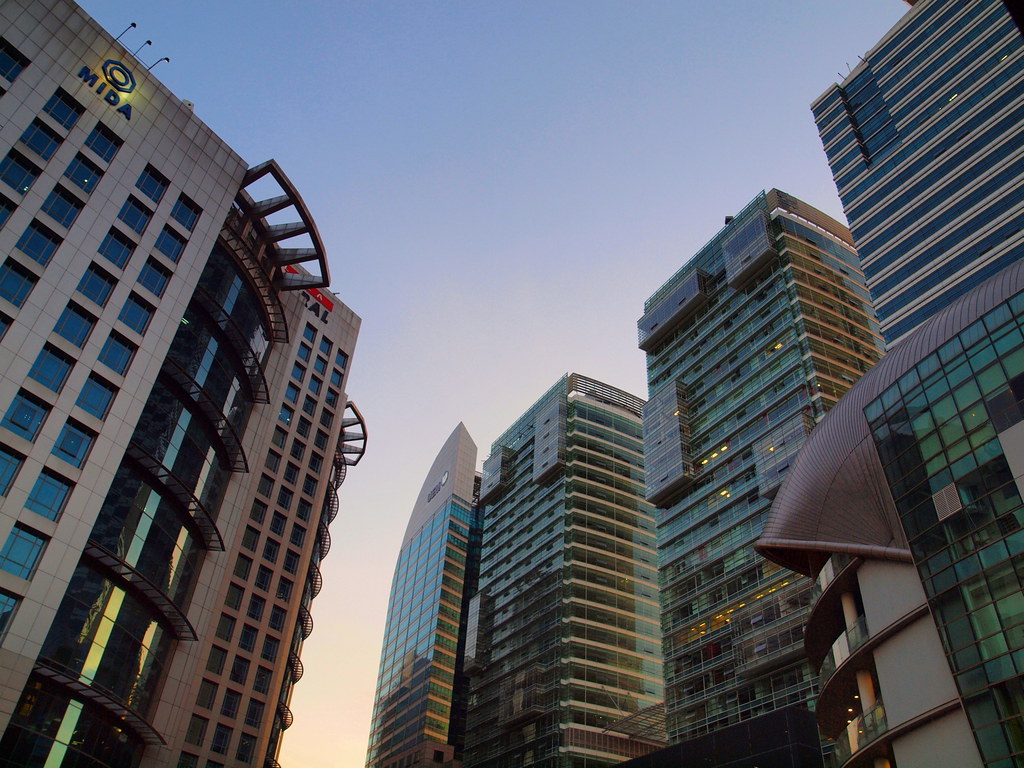It is not often you can get a sense of affection from an inanimate object. To get that affinity, the object must have a soul. That is exactly what the E-P1 does to me when I hold it for the first time!
Such a soulful electronic device.

The life of the camera emanates radiantly throughout; it generates a new excitement whenever I hold it up to frame a shot, it gives me the goosebumps whenever I hear the shutter sound, it envokes satisfaction to see such quality bleeding out of every nook and curve of this beautiful camera.
You guys must think I am crazy - in love with a metal alloy, filled with silicon and plastic.
Well, I can dare that if anyone of you had ever held an OM-1 with an OM Zuiko the first time, I can guarantee you will feel the same. (I never had the chance to hold a PEN; but I can say, the OM is no slouch here).
The heft, the grip, the feel.... It reminds me of my old friend that I had forgotten ever since I went full digital 3 years back. The aura and magic of the OM-1 breathes in the E-P1!
Where has Olympus been for the last 5 years?....
Okay, enough rambling now... cut the nostalgic romance! I have a review to write... sheeshh!
The E-P1
Ain't she a beauty! Metal composite body, retro-design, simple interface and a compact lens!
When I held it the first time, I noticed the weight of the E-P1. It is dense. After comparing with the OM-1, I realized that both have similar heft and feel. Retro is back! Gone are the plasticky feel of the modern machines.
Build is superb, without any feel of creaking of the body on the chassis. The lines and curves are pleasing to look and hold; and, that matters much for a camera that lacks a battery grip! Serious!
The finish is metallic with two tones of brushed and chrome metal. It is sublime. The grip indentation is black with leathery texture, further invoking the retro effect.
Notice that the built-in flash is missing. This issue is currently one of the hot debates in many a fora, and I will not dwell into it here. (Though, I really miss the RC Flash capability as there is no commander mode for the current external flash....)
Tell you what, after a few ours of shooting, I totally forgotten about the lack of a Viewfinder, be it either electronic or optical. The LCD screen is superb to provide sufficient details that it can withstand strong sunlight here in a country just a few hundred miles from the Equator. I know, I know... this is another hot debate topic in many fora, too. For me, I just learned how to get over it. It's not really a big deal shooting at arms length, considering the In-Body Image Stabilization is good up to 3 stops!
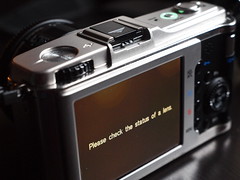
Simple and compact is the name of the game for the PEN's reincarnation. Much of the analog DNA is preserved here. Just look at the key interface at the rear of the E-P1.
On the left, the tactile and fluid rotary mode dial presents confidence in selection, with only the key modes available - there are 8 indentations to be exact. There is the compulsory AUTO, followed with ART, SCN, HD Video, M, S, A and P modes; all lined up if rotated counterclockwise.
The ON/OFF button is beautifully designed. Much effort is being done here, with the button surrounded with a green light ring. Quite a nice touch!
The shutter button is located adjacent to the ON/OFF button, and the feel when engaging the shutter release is similar to E-30 or E-x10 buttons. A smaller button fills on the outer front to provide EV compensation control.
The shutter sound? What shutter sound? Well actually, with the lack of the mirror slap, the shutter actuation is much softer, very much softer then the OM-1. The shutter response is as good as a DSLR, there's hardly noticeable shutter lag. Excellent!
At the rear right control panel, there are more buttons. All intricately outlaid with much thought that my fingers do not have a cramped feeling when moving about the controls. The typical buttons are there, especially the AF, ISO, WB, AEL/AFL and Fn buttons. The OK button stands out strongly in the middle of the four-way pad, typical for all E-system cameras.
Of all the controls, the most that really catch my attention are the rotary dials. There are two!!
One is the obvious gray perching near the thumb area. The other is the hidden black ring dial, surrounding the four-way pad. This is nice! So nice, that I quickly set both dials similar to my E-3 and E-30 settings!! Sweet!!!
Can you believe it? The E-P1 has 2 rotary dials, much similar with all high-end DSLR designs!
Ooohh.. One final thing! The E-P1 uses SD memory card instead of the xD! This is great! Good riddance of such a slow processing and low capacity xD chip. Well, that means that I have to buy an SD card! No big deal, 2GB should be enough for this review.
Does this mean SD will be also be part of the next E-cameras? Only Watanabe, et. al. can tell...
The promise of microFourThirds is the redesigned lens mount, which guarantees more compact lenses. Does Olympus fill this promise? Definitely!
The designate zoom kit M.Zuiko ED14-42mm f3.5-5.6 lens is so compact, that it has the same size as the OM Zuiko 50mm F1.4! That is small!! It also comes with a 40.5mm filter thread, and the lens cap is an outer-pinch design, similar to earlier FourThirds lens caps.
There lies a hidden secret with regards to the 14-42mm lens, as it is actually a collapsible lens design. With a quick counter-clockwise twist of the zoom ring, the lens is extended in two overlapping extensions for usage. In actual fact, the lens easily doubles in length!! Kudos... the extensions are rigidly designed that there are minimum leeway for gaps and loose movements. Great precision. One little niggle, though. The lens front element has about 60-degrees of movement during focus. This can be a problem for Polarized filter shooting.
To collapse the lens, all I need is to twist the zoom ring clockwise whilst pushing and holding the "Unlock" lever. Somehow, there is a communication protocol with the E-P1 body to sense the lens position. The LCD screen simply darkened with a phrase "Please check the status of a lens".
Now, my first experience with this was sheer panic!! Check what status, for God's sake?!!! I really thought the lens was broken (this is not a funny situation when you are using a review unit). After a couple of minutes sweating it out to figure the mechanics of this lens, I was pleased to find this nice gimmick. Pheeww!
Another beautiful and elegant lens is the 17mm f2.8 pancake! It is just small, sporting a 37mm thread. It shares the same outer-pinch lens cap design, not the screw type of the 25mm f2.8 pancake. The Auto Focus works marvelously for such a small design. It is amazing how the Zuiko engineers manage to cramp all the mechanics and electronics in it.
Overall, the Contrast Detect AF performance is quite rapid. Though considered sluggish compared to Phase Detect AF, the time to focus on the CDAF is acceptable even for an avid user like me. Actually, I am amazed with its accuracy and consistent performance; I have yet to get out-of-focus shots. From my samples, I only shot at lowest EV5 situations and for further evaluation maybe should test the CDAF for much lower EVs. (Note that the type of shooting with this camera is not really designed for low light and action scenes).
Oh ya, another important observation... both lenses are of plastic construction! Some will hate this. To me, this is not a big deal, too. And, both do not have lens hood attachment mount. Hmmm.... Glare can be a problem here.

Well, at least the mount of the lens is made of metal. This should comfort some purists.
Optically, both lenses produce high quality images. Distortions, chromatic abberations and vigneting are greatly controlled; whether this was purely optical or software, I cannot confirm now. I will look into it later in the following blogs.
For Manual Focus lovers, the E-P1 provides focus assist function for both lenses. When the MF is engaged, with just a tiny twist of the focus ring the image is magnified 7x. The location of the magnification is dependent on the AF point selected; meaning there are 11 points to choose from depending on the shooting situation. This is nifty, especially in low light conditions when the CDAF cannot lock in low contrast scenes.
E-P1 LCD Screen
How about the electronic interface? Whilst the E-P1 MENU is much simplified from the E-420, the key elements are still there. There are mixtures of features from the E-30, too. There are 2 Camera Icons, 1 Play Icon, 1 Gear Icon (with extension up from A to I), and 1 Spanner Icon.
Another big change is the INFO button. Instead of showing the Super Control Panel, the E-P1 instead displays a Canon G9-like structure. To navigate through the icons, you can use either the scroll dials or the four-way pad. Not to worry, the operations is very intuitive. (Actually, a dpreview.com forumer pointed out to me that it is possible to activate the SCP; first press the "OK" button, then press the "INFO" button. Wow, I am back to E-system control navigation, not some G9-like interface). I like!!
One thing to note, in no way I can deactivate the LCD screen when not shooting. The LCD stays on all the time. There is a Sleep timer setting, and the default is at 1 minute.
The LCD resolution, while considered old tech with 230,000 pixels, renders sufficient detail when shooting in bright lights condition. At very low light that the pixels start to break down, and the LCD displays noisy image feedback. This can be annoying to some.
Since the EP-1 engages in full Live View shooting, i.e. the LCD is always used as the viewing screen, the full effect of color and exposure changes are shown. I find this to be very engaging as the real-time feedback can assist me in determining the final effect of the shot even before pressing the shutter release. Never has photographic experience with a DSLR quality been achieved until the E-P1 and its brother-in-arms Panasonic G1 and GH1 utilizes the live view technology in the microFourThirds philosophy. Definitely a P&S experience with DSLR satisfaction.
E-P1 Shutter Sound
A comparison of the E-P1 mirrorless shutter sound with the legendary OM-1 air-dampened-mirror shutter sound.
HD Video
I am a bit skeptic about videos on digital cameras, especially the D-SLR types. But, the trend is going that way and that's how the future will look like. Definitely video will be part of microFourthirds, but on the current Fourthirds? Only Olympus can answer that.
Video capability on the E-P1 is very basic; not as I have expected. This is what I mean.
There are two options, either High Definition or Standard Definition. For HD, there are 3 options: 1080i, 780p and 480p/576p. For my samples, I only shoot in 780p. There are no options for SD.
As for the videography controls, I can set the Aperture, Exposure Compensation, White Balance, Auto Focus, Image Stabilization and Microphone. Note that ISO or Gain (in Video terms) is not available.
There are two stereo microphones on either side of the Olympus logo on top of the lens mount. There is no wind-cut or internal noise damper. This is a bit sad. Because during focusing, the sound of the AF motor is recorded too!! And it is not a pretty sound, more like sand paper on concrete! :(
Even the Silent Wave Drive AF motor is not spared! The whooshing sound is audible.
In Auto Exposure selection, I can only select Program mode, Aperture-Priority mode, and the 6 Art Filter modes. There are no Manual or Shutter-priority modes! Well, come to think again, the E-P1 is using Focal Plane shutter, and I don't think it is possible. This is very limiting, at least for me. I find the Art Filter modes are not much of use, too; especially for the highly processed filters such as Pin Hole and Grainy Film. This processing introduced high lag time, that resulted in low shutter speed; thus, the recording looks like high FPS still images!
Once I select the video settings, and start recording, the E-P1 only allows focusing changes. Any other setting selected is not controllable. This is another bummer!! And, the focusing changes can only be done via the AFL button. If I have selected C-AF, I cannot change to S-AF or MF, and vice versa.
On playback, the images are very crisp and clear, as expected from a HD video. The audio is very good, except for the annoying AF motor sound. A typical 30 second file takes up about 120MB file space.
Well, that sums up the video experience. I am rather disappointed, or maybe I am just expecting too much.
I have added the videos in another blog entry. Check the reference section for the link.
References
E-P1 Full Specification
HERE.Pictures taken with E-P1, and pictures of E-P1 (taken with E-30)
HERE.
E-P1 Sample Gallery
HERE. I have allowed full resolution download on selected pictures taken using the E-P1.
E-P1 Videos samples
HERE.
Less than 1 week in the Japanese market, the E-P1 stormed to #2 behind Canon Rebel.
HERE.
E-P1 AF Compatibility with Zuiko Digital 4/3 lens.
So far, S-AF, MF and S-AF(MF) modes are supported. In MF mode, the AF Assist function works with quick manification of 7x.
E-P1 with Zuiko Digital ED14-35mm F2.0 SWD
E-P1 with Zuiko Digital ED7-14mm F4.0
My Personal Opinion
Out of camera JPEG is typical of Olympus E-system, with excellent color renditions. The contrast seems a bit flat, in which I think the TruePic V processing is too conservative. The 12MP sensor delivers enough resolution and color depth in Large Superfine mode similar to TIFF files. The typical size per file is reaching 8MB.
As for ISO performance, the base is 200 with great noise control up to 1600. I set the Noise Filter to LOW setting, which is same for my E-3/30. This setting does not compromise the details whilst reducing the color noise.
I have done some sample shots at ISO
1600,
3200 and
6400 with the Noise Filter set to OFF. From the simple comparison with E-30 high ISO shots, I can say that the E-P1 TruePic V engine has done some credible job in reducing noise. E-P1 ISO3200 is much better than
E-30's, and I can recommend shooting up to 3200. I think that's the limit, as the E-P1 ISO6400 is very noisy.
Well, who should get the E-P1?
In my opinion, it is lodged in a niche that can fit both the beginner and enthusiast. I strongly believe the mainstream market is being captured by Panasonic with its strong mass appeal in the electronics industry. Nonetheless, this does not mean that the E-P1 is inferior to the G-1 or GH-1. Travellers, street and casual shooters will find the E-P1 to be a reliable companion.
And the beauty of the microFourThirds is that the current Panasonic lenses such as the 7-14mm f4 G and 14-140mm G are fully compatible with the E-P1. The system will grow, as both companies are looking at complimenting the market rather than directly competing.
Overall, I find the E-P1 a fun yet powerful photographic tool. Despite the lack of some traditional features of the common camera design, not a speck of blame I can put to the ingenious and innovative Olympus designers and engineers. They deserve my standing ovation.
The whole package just breathe revolution!
